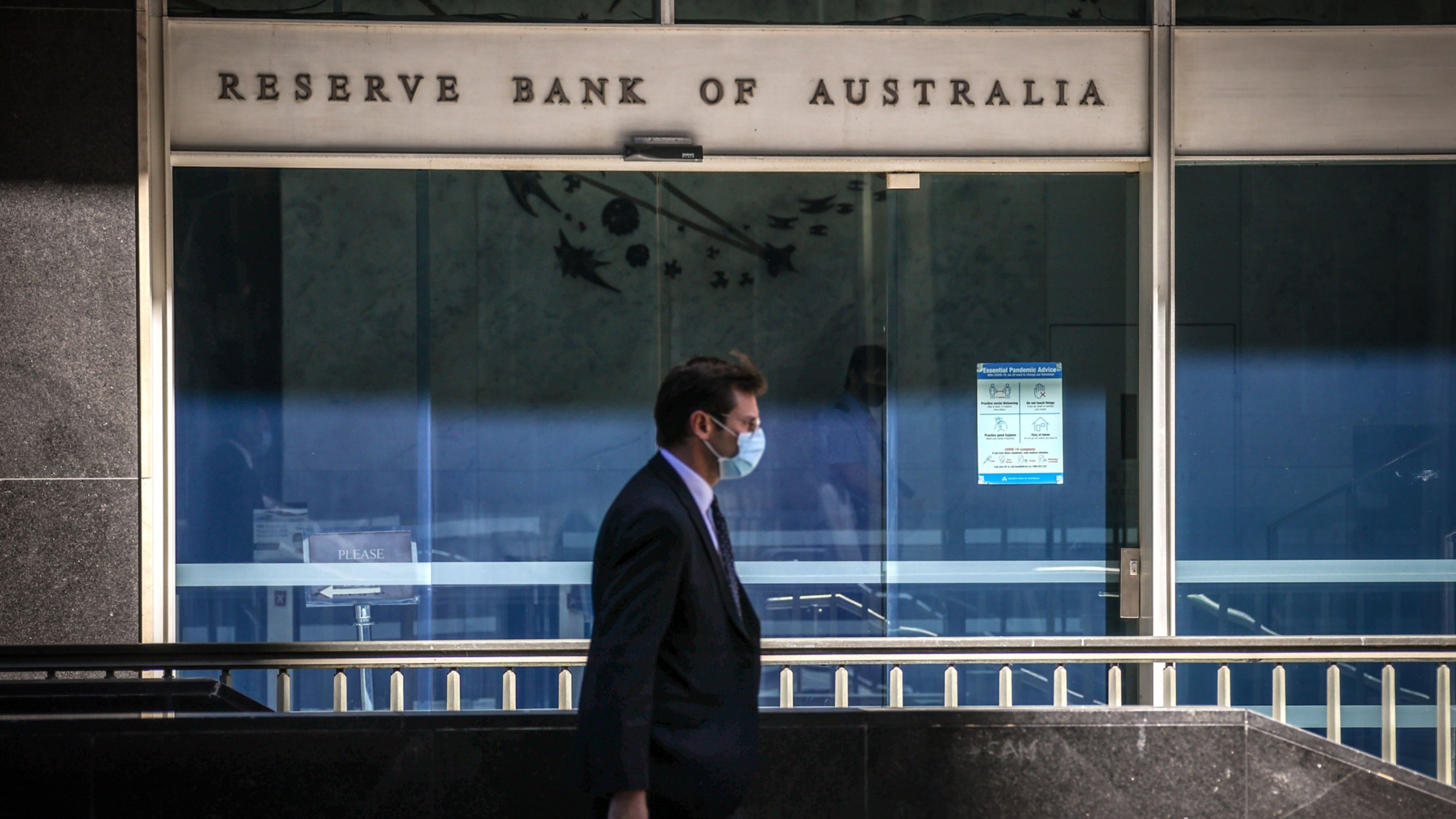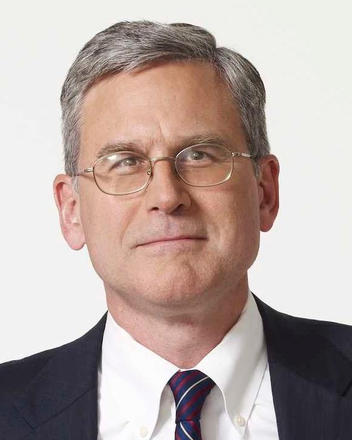
Central banks around the world are contending with stark choices around how to unwind their Covid stimulus packages in the face of turbulent markets.
In 1955, William McChesney Martin, the ninth chair of the US Federal Reserve, quipped that a central bank’s job was to “take away the punch bowl just as the party gets going”. As an observation of the need to reduce monetary stimulus before structural inflation takes hold across an economy, it was prescient.
Since the global financial crisis, central banks in advanced economies have presided over ultra-loose monetary policy stances in order to stimulate growth. The Covid-19 pandemic spurred many of them to double down on this approach; interest rates have fallen further, while quantitative easing (QE) programmes have expanded to support ailing economies.
The results of this ‘great easing’ of monetary policy can be seen everywhere, from the exorbitant cost of real estate in cities from Melbourne to Toronto — pricing working people out of the housing market — to sky-high equity valuations in the US and to distortions in global bond markets. Public and private debt levels have also ballooned over the same period.
If you look at the last business cycle, the Fed didn’t hit its target for inflation
As Mervyn King, a former governor of the Bank of England (BoE), noted years before the onset of the Covid-19 pandemic: “Central banks are in a trap of their own making. Continually falling interest rates have pushed asset prices up to levels that are only sustainable through expectations of further falls in interest rates or other forms of monetary policy stimulus.”
The problem today, however, is that expectations around this dominant monetary policy regime are changing. This is because long-dormant inflationary pressures are now back with a vengeance, at a time when major central banks have left the proverbial punch bowl on the table. Pulsing consumer demand — stemming from the relaxation of health restrictions — has pushed fragile global supply chains to breaking point, stoking inflation across the global economy. This crisis is being compounded by price instability in global energy and commodity markets.
At present, central banks in advanced economies around the world are grappling with the problem of inflation in a way that they have not experienced for many years. “We’re definitely moving into a more inflationary world. Inflation numbers [in the coming years] are going to be higher than they were in the past decade,” says Diana Mousina, senior economist with AMP Capital in Sydney.
Pressure builds
An ever-growing list of inflationary indicators points to broad-based price pressures spreading across key economies, particularly in the US. Personal consumption expenditures, a measure of consumer spending, increased by 4.4% in September 2021— its fastest increase in 30 years — while an equally worrying spike in rental prices is taking place.
The US is in good company. Similar inflationary trends are being felt globally, including in the eurozone, the UK, Australia and South Korea, which all recorded multi-year highs to key inflation gauges in September. Though strong arguments exist that suggest much of this will be transitory, there is good evidence to suggest that a real step change in the inflation environment has occurred.
“The real question is whether we’re going to go from this world of 1.5% average inflation over the past couple of decades to something closer to 2.5% or 3%. If you look at the data, there are hints in the numbers that we are at the beginning of that acceleration,” says Ethan Harris, managing director and head of global economics research at Bank of America Merrill Lynch Global Research.
When faced with the threat of inflation, central banks would typically raise interest rates to take the heat out of the economy. But the solution to the current malaise is not so clear. For one, the source of today’s inflation problem largely stems from supply-side issues. “The problem then is what good would a rate hike do at the moment? It wouldn’t create more semiconductors or resolve labour shortages, it would just squeeze people’s incomes further,” says Martin Beck, senior economic advisor to the EY ITEM Club, a UK-based economic forecasting group.
Monetary policy
Households and businesses that are feeling the pinch from higher inflation will be hit further by a rise in interest rates. This could dent any economic recovery from the pandemic in some markets, piling further pressure on economies that are emerging into a Covid-managed world. Beyond the question of economic growth, however, sits a larger concern over how some markets can hope to normalise their monetary policy regimes after years of asset price inflation and financial market reliance on QE programmes.
This challenge has been compounded by rocketing public debt levels, which will also be sensitive to an interest rate increase. The UK is a case in point: “At the end of the day, when they start raising bank rates, that’s going to really hurt the [UK] government’s finances because so much of the debt now is basically at that bank rate. They’re going to have to bear that in mind and it might slow them down in terms of normalising interest rates,” says Mr Beck.
Among advanced-economy central banks, two strategies of policy normalisation seem to be emerging. The group of first movers has already tightened interest rates, with the Monetary Authority of Singapore, Norges Bank and the Reserve Bank of New Zealand all raising their benchmark rates in the second half of 2021. A second group has started winding down their asset-purchasing programmes. In late October, the Bank of Canada abruptly terminated its QE programme, while bringing forward its guidance on a potential interest rate rise, causing its sovereign bond yields to soar. Similarly, the Reserve Bank of Australia (RBA) abandoned its policy of yield curve control on a three-year sovereign bond in October. The BoE is slated to end its QE programme by the end of 2021.
In November, the Federal Reserve announced it would start tapering its monthly $120bn stimulus programme by reducing its acquisition of US Treasuries by $10bn per month and agency mortgage-backed securities by $5bn per month. On this basis, the Fed’s asset purchase programme will cease by June 2022. In addition, most analysts expect a first interest rate rise to occur by the middle of 2022 in the US. This timing reflects the Fed’s position on inflation as being a largely transitory phenomenon, its historic failure to reach its 2% inflation target since the financial crisis, and the introduction of an outcomes-based policy framework that emphasises achieving goals around inflation and employment before raising rates.
“A lot of [the current strategy] is informed by what happened during the last business cycle. If you look at the last business cycle, the Fed didn’t hit its target for inflation. It took forever to get the economy back to full employment. The recession ended in 2009 and we didn’t get back to a healthy job market until 2017,” says Mr Harris.
We could see an ECB that reduces asset purchases more than we were initially expecting
“Every business cycle is different; sometimes the Fed has easy sailing and sometimes it has rough sailing, and I would say that right now they’re going to have tougher choices in this cycle. In the last cycle they never had to really come to terms with inflation. They never had to make that choice of deliberately trying to hurt the economy to stop the inflation. In this cycle, I think they’re going to have to make that choice at some point,” he adds.
According to critics, the danger here is that the Fed, under its current strategy, may be forced into a delayed form of policy tightening where it is forced to catch-up through aggressive rate hikes in 2022 and 2023. Mohamed El-Erian, president of Queen’s College, Cambridge University and chief economic advisor at Allianz, painted such a scenario as being the biggest monetary policy mistake in the past 40 years in his regular Bloomberg column.
Sovereign debt
In this respect, the problem that central banks are facing is the fact that the markets are turning against them. In the closing months of 2021, bets against official timelines for interest rate hikes were piling up in the money markets, while bond yields were also moving in a similar fashion. Short-dated sovereign bond borrowing costs have increased across several advanced markets, including the UK and Australia, as market participants have started to price in rate hikes over the next year, above and beyond official indications.
During the last week of September 2021, the RBA was forced to abandon yield curve control measures on its three-year April 2024 sovereign bond, as market pressure piled against it. Until that point, the central bank had maintained a yield of 0.1%. When it failed to enter open-market operations to defend that target, the yield surged to 0.8%. “I do think the market is getting a bit carried away. There are definite reasons for why inflation is going to be higher over the next two-to-five years, but I don’t think we’re entering an environment where you have inflation running at 5–6%,” says AMP Capital’s Ms Mousina.
The issue of rising bond yields is even more troubling in the eurozone. The European Central Bank’s (ECB) introduction of a massive stimulus mechanism, called the Pandemic Emergency Purchase Programme (PEPP), at the onset of the pandemic has helped many euro-area governments through the worst of the crisis. Notably, it has assisted in flattening out government bond yields across the eurozone. Italy, which has a public debt to gross domestic product ratio north of 150%, has enjoyed yields of below 1% on its 10-year sovereign debt as a result. Yet, this is not sustainable, and once the ECB begins to taper, the bond vigilantes are expected to make a return. For the eurozone’s peripheral economies — and their banks, which are loaded up on sovereign debt — difficult times could lie on the horizon.
“Within the ECB’s governing council, the hawks are becoming more prominent. And it means that we could see an ECB that reduces asset purchases more than we were initially expecting over the course of next year, with PEPP likely to end in the first quarter,” says Bert Colijn, senior economist at ING.
A balancing act
Over the next 12 months, central banks will have to continue to walk a fine line between balancing the need to sustain growth and manage inflation, while changing their policy stance from the emergency footing it has been on since the onset of the pandemic. What this represents is a wholesale change in the conduct of monetary policy. After more than a decade of QE and low interest rates, the global economy and financial markets must prepare for an environment in which rates are hiked and central banks stop buying public and private securities. The implications of this change are likely to be profound.
“We’ll find out how well markets handle this. We’re going from a world where interest rates always seem to go down, to one where they are trending higher. That is a big unknown. How high can the Fed hike and bond yields go before risk assets run into trouble? I think the risk of it being a volatile environment is pretty high,” says Mr Harris.
With asset prices at all-time highs and global debt — including government, household, corporate and financial — at record levels of almost $300tn, according to the Institute of International Finance, there is plenty of scope for turbulence in global financial markets in the coming months. As the punch bowl is removed, it remains to be seen how quickly the situation could deteriorate.




